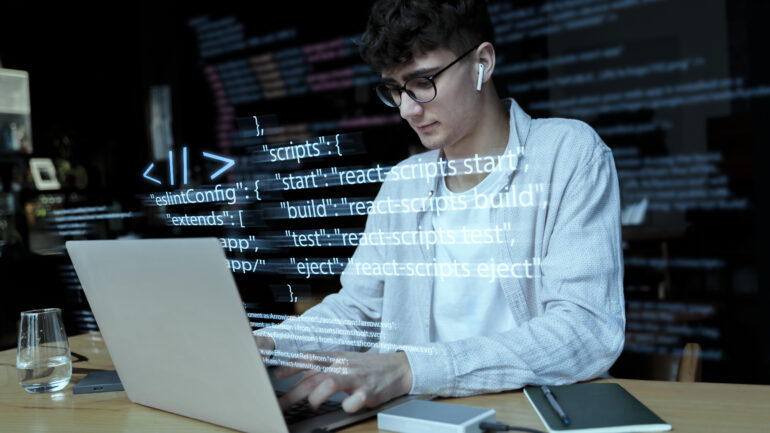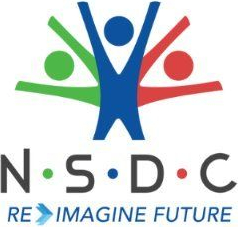Coding in the AI Era – From Autocomplete to ‘Thinking’ Coders

The second wave of AI coding isn’t just a tech revolution – it’s a creative revolution. It’s an invitation to reimagine what’s possible in software, to explore how machines and humans can collaborate, and to dream bigger than ever before
Imagine this: You’re a software engineer tasked with building an app that lets people order groceries with just a few taps. Instead of sitting down to write every line of code yourself, you open an AI assistant. You tell it what you need: “I want a homepage where users can browse, a search bar to filter products, and a checkout process with payment options.” A few seconds later, the assistant not only writes the code for you but also tests it, identifies bugs, and offers suggestions for improvement. You’re no longer sweating the details – you’re reviewing, fine-tuning, and managing the process instead of grinding through every keystroke.
This is the future of software development, thanks to a new wave of AI coding tools. These aren’t just smarter autocomplete tools like GitHub Copilot, which millions of developers already use. They’re more like virtual team members, capable of prototyping, debugging, and solving problems almost independently. Some experts even believe these tools could be the stepping stones to artificial general intelligence (AGI) – machines that think, learn, and reason like humans.
Coding in the AI Era
AI and coding have become best friends. Tools like OpenAI’s ChatGPT, Anthropic’s Claude, and Google DeepMind’s Gemini are now helping developers churn out better software faster. Sundar Pichai, the CEO of Alphabet, recently revealed that over 25% of new code at Google is AI-generated. That’s right; a quarter of Google’s code is written by machines, then reviewed by humans. This approach is turning traditional programming on its head.
And it’s not just tech giants. Startups are racing to grab a slice of the AI coding pie. Companies like Zencoder, Merly, Cosine, and Poolside have raised eye-watering sums of money to develop next-gen AI coding tools. Poolside, for instance, is valued at $3 billion – even though it hasn’t released a product yet! Why the frenzy? Because developers are willing to pay for AI copilots that make their jobs easier – and faster.
The Leap From Autocomplete to “Thinking” Coders
The first generation of AI coding tools acted like turbocharged typewriters. They helped you write code faster by predicting what came next, but you still had to guide the process. The new wave of tools aims to be more like project collaborators.
Here’s the big shift: instead of simply spitting out code that “looks right,” these AI systems aim to produce code that works right. They’re not just writing programs – they’re thinking through the problem, running tests, fixing bugs, and learning from their mistakes.
It’s the difference between teaching someone to copy the final steps of a recipe versus teaching them how to experiment, adjust, and create their own dish from scratch. This evolution is crucial because writing code that compiles (doesn’t crash) is easy for AI now. Writing code that does what you actually wanted? That’s the hard part, and it’s where these new tools shine.
Follow the Breadcrumb Trail
To get there, AI tools are learning to mimic how humans think through programming tasks. Startups like Cosine and Poolside are creating “breadcrumb trails” for their AI models – detailed records of how developers solve coding problems.
For example, Cosine has asked human coders to document their every move. Why did they open one file and not another? Why did they scroll through a specific section of code? These insights are used to train models on not just what the final code looks like but how it came to be. Think of it like teaching a child to solve a math problem step by step instead of just handing them the answer.
Meanwhile, Poolside is taking a page from DeepMind’s playbook. Remember AlphaZero, the AI that became unbeatable at chess and Go by playing itself millions of times? Poolside is applying the same idea to coding. Its AI runs thousands of simulations to figure out the best way to solve a programming challenge – learning from both its successes and failures.
Smarter, Faster, Leaner
One of the biggest breakthroughs here is context awareness. Early AI coding tools could only look at a small slice of your project—maybe the files you had open. But what if your project has thousands of files? Tools like Zencoder have cracked this problem with something they call “repo grokking”. It’s basically an AI-powered deep dive into your entire codebase to find exactly what’s relevant. This dramatically improves accuracy and reduces errors.
And it’s paying off. Cosine’s coding assistant, Genie, is already topping industry benchmarks, and Poolside claims its prototype rivals GitHub Copilot in performance.
The Debate: Is AI Ready for This?
Not everyone is convinced that AI can truly replace human developers. Some critics argue that large language models, like those powering these tools, are still fundamentally flawed. “Programming is about logic,” says Justin Gottschlich, founder of Merly. “No amount of training can make an inherently illogical system logical.”
Merly is taking a different approach, focusing on the underlying logic of code rather than the code itself. Instead of training its AI on existing programs, Merly teaches it to think in the intermediate language that software gets translated into before running. It’s like skipping the messy human handwriting and going straight to a clean blueprint.
The Bigger Picture
Here’s why this matters: as AI takes over more of the heavy lifting in coding, developers are transforming from builders to curators. This shift could make software engineering more accessible, allowing people with big ideas – but little technical expertise – to create groundbreaking tools.
And if these models keep improving, some experts believe they could pave the way for AGI. After all, coding is one of the most complex, economically valuable tasks humans do. If AI can master it, what’s next?
A Creative Revolution
The second wave of AI coding isn’t just a tech revolution – it’s a creative revolution. It’s an invitation to reimagine what’s possible in software, to explore how machines and humans can collaborate, and to dream bigger than ever before.The tools are at your fingertips; it’s time to find out.


